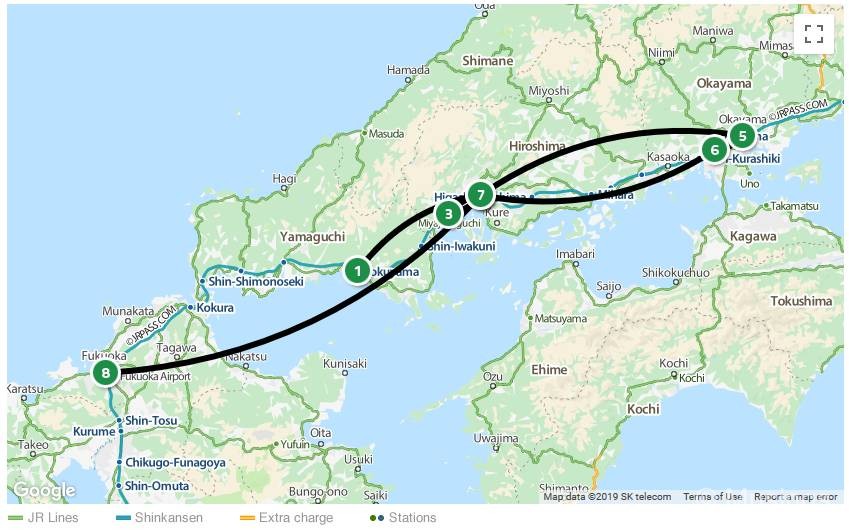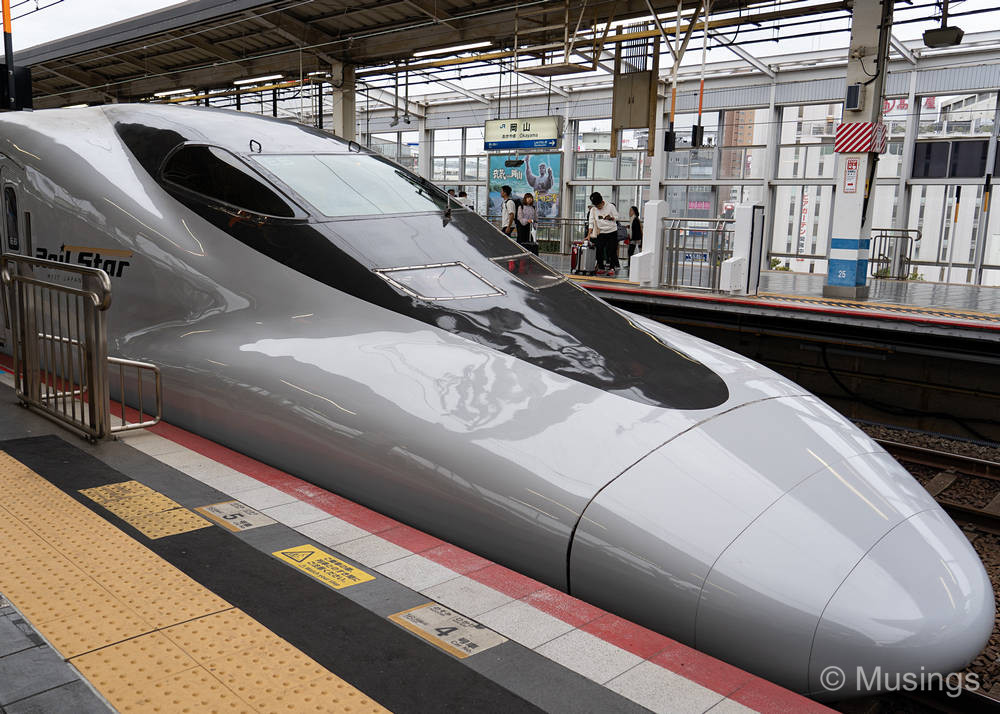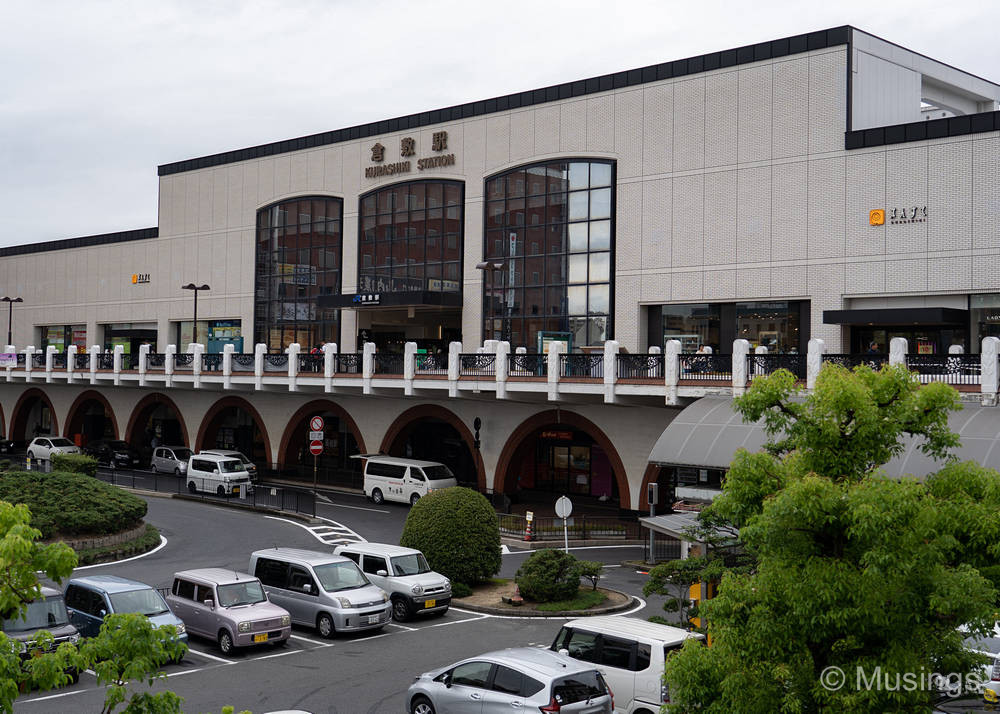I’ve got quite a few notes to jot down here, so my post-trip Reflections will span two posts.
I did two trips to Japan previously in 2009 and 2010, blogged here and here. The first visit was also work-related where I taught at a Japanese college in Kumamoto, and I kept my exploration within the city as I didn’t extend my stay much. The second trip was a couple one and when our first born – Hannah – was still a little lass, and the trip saw us visiting several cities, including Kobe, Kyoto, Nara and Osaka. This 11 day trip is again the first of two trips we’re making to the country this year, with the other one a longer 15 day trip to Tokyo and Hokkaido, and this time with the entire troop at home. I kept my exploration to the southern-half of Japan this time, though the country is so large that you don’t have to intentionally avoid itinerary overlaps.
The exchange rate has changed quite a bit since that last visit in 2009 to date, and actually cheaper today in comparison. ¥100 was about SGD1.60 ten years ago, and SGD1.28 today. That softened the impact of price inflation, though my general sense of pricing of dining was that it hasn’t increased by the same degree as I’ve observed in our part of the world, i.e. South-East Asia.
If there’s one aspect of visiting Japan that makes it possible to fit a huge number of very varied sights in a small number of days, it’s the Shinkansen, the high-speed rail system that makes long distance travel across the length of the country convenient. In fact, we were seriously exploring whether to take the Shinkansen from Tokyo to Sapporo for our December trip, on account that P is fascinated with train rides. But we’ve dropped that idea in preference of a domestic flight as the time for travel – about 8 hrs – simply is just too much time take out from our overall 15 day itinerary.
Key to travel for short stay visitors on the bullet train is the Japan Rail Pass, which covers travel on the Shinkansen and trains run by Japan Rail. There are numerous web sites that comment on various aspects of the JR Pass: how to obtain it, how to make sense of and use it, the different types of passes that cover different regions and durations, and even travel itinerary ideas to best optimise time and also the cities covered by each pass.
My work event was in the city of Tokuyama in the Yamaguchi prefecture. I had five full days of sight-seeing post-event, and was particularly interested to explore the Hiroshima prefecture, which itself is one part of the larger region known as Chūgoku. So, the most appropriate pass for it seemed to be the five-day JR Okayama Hiroshima Yamaguchi Area Pass. I wasn’t going to spend all five days in the Chūgoku itself as I was setting aside a day to explore Yanagawa and Dazaifu – which is in Kyushu, the region south of Chūgoku. But one significant bonus of this particular JR Okayama Hiroshima Yamaguchi pass was that the cost of travel to Hakata was also included – which itself is already a hefty ~SGD70 for one way. That fit in nicely with my overall plan!
I purchased the five day pass from Klook, and the entire transaction was completed online and in minutes. At the point of purchase, you specify your proposed start date of the five day window, and after payment, you get emailed an e-Voucher in PDF. You’ll need to print this Voucher, and bring it to any JR Shinkansen office to have the Voucher converted to the actual pass itself.
The savings I got with this five day pass? Well, the price I paid via Klook was SGD177. And the trains I took across my four day use were like this:

The train routes were Tokuyama => Hiroshima (Day 06), Hiroshima => Miyajimaguchi => Hiroshima (Day 07), Hiroshima => Okayama => Kurashiki => Hiroshima (Day 08), and finally Hiroshima => Hakata (Day 09). According to the JR Pass Fare Calculator, the cost of these train rides would had normally been ¥35,140/SGD451. So, with the pass, I paid 40% of the actual cost of travel. The savings would had been even more substantial had I retained my side-trip to Iwakuni on Day 08 too.
Of course, how much savings one gets from JR Passes always comes down to how much travel you are planning between the cities covered by the pass, and also whether your routes are just city to another nearby city, or involving longer distances. In my case, the pass was super worth it, and I suspect the fact that there was a relatively long ride from Hiroshima to Hakata Stations played no small part in it.
There are numerous articles that have commented on how punctual the trains are in Japan, and the level of seriousness enacted on that. For example, there’s this story about how train management issued an apology after their trains departed 20 seconds earlier than scheduled! Basically, when your train system is this reliable, it makes planning your routes easy and you feel a very high level of confidence. Google Maps was of course instrumental to this, as the timings I saw on Maps each time was exactly correct, wth the Shinkansen or local train arriving at exactly the time Maps said it would. Of course, you’ll want to make sure that the clock on your mobile device isn’t off to begin with. What was also helpful was Maps’ ability to report the progress of your journey each stop, even when at underground stations.


While train timings and arrivals were exact, Maps was less effective when assisting which platform I needed to be on, or the track the train was arriving or departing at. For the major rides like the Shinkansen and when at the important stops like Hakata and Hiroshima stations, Maps would report the train name and also where you need to be at to catch the ride. At the smaller city stations, like in Nishitetsu-Futsukaichi station where I was supposed to have changed to a connecting train to Dazaifu, Maps was unable to report where the connecting track was. No, I’m not blaming Maps for omission of that information, since its ability to inform where I need to go to catch the right ride at the main train stations is already very helpful. But it’s just something to be mindful of. Using Google Maps does not mean you can stop reading train information displays or signages!
The JR Pass aside, the local train rides in themselves were not exactly cheap though. For instance, a ride from Hakata to Gion Stations – one stop away – is already ¥200/SGD2.50. So, all of us Singaporeans who whine about the increasing prices of MRT rides need to get some perspective, the obvious differences in system reliability aside. The cost of cabs in Japan further reinforce this point: a short 3 minute cab ride in Tokuyama from the train station to our conference venue – about two kilometres away – was already ¥700/SGD9. In Singapore, the price of that would likely be roughly half that.
Finally, there’s a fun story I remembered from our couple trip to Japan 9 years ago. We’d just arrived in Kobe, and the wife was trying to figure out how to use the train ticketing machine, which eventually involved three aunties joining the hen cluster. That visual sight is blogged here for posterity haha. The use of English as a secondary spoken language hasn’t improved by that much in Japan, but signage has – and also, many of the ticketing machines routinely have an English option now too, and the train information displays likewise also refresh to English versions every couple minutes. So, progress for short-stay visitors like us.:)
My post-trip Reflections continue in the next post.
Recent comments